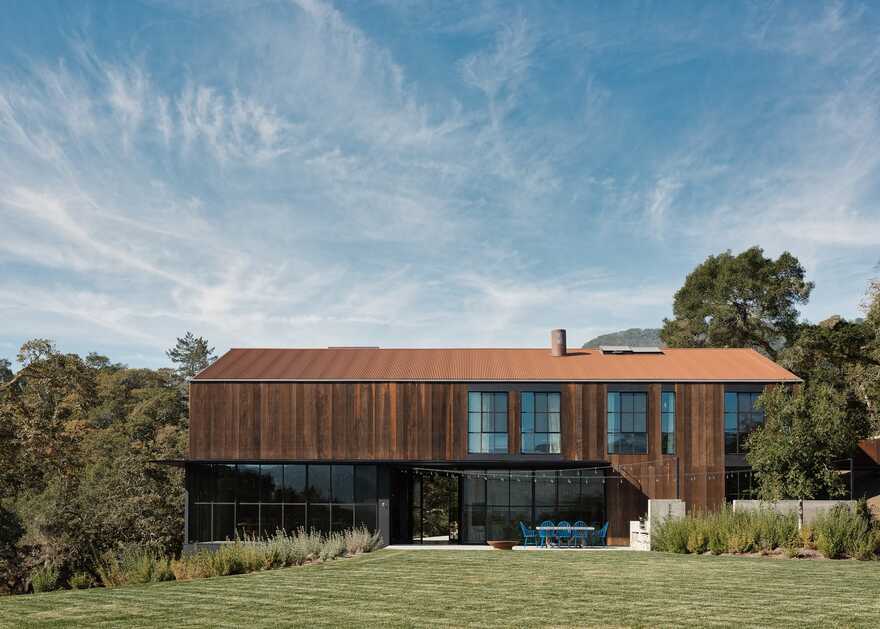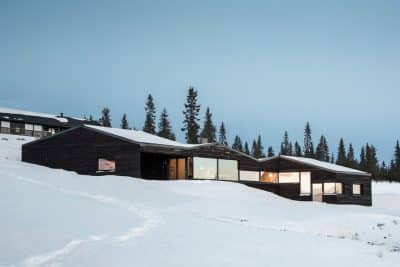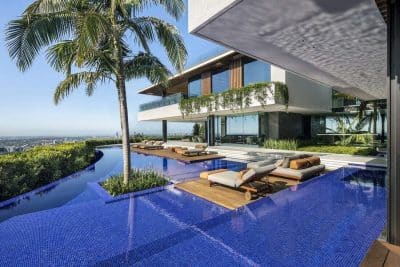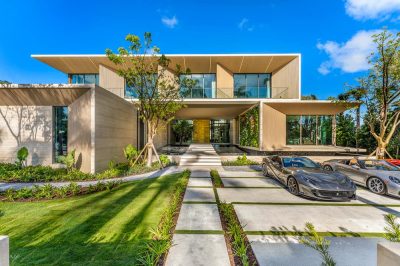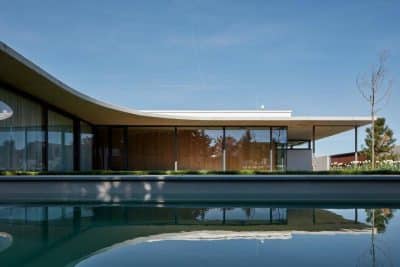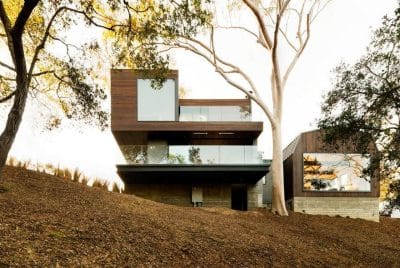Project: Big Barn
Architecture : Faulkner Architects
Team: Greg Faulkner, Darrell Linscott, Christian Carpenter, Jenna Shropshire, Richard Szitar / Faulkner Architects
Contractor: Redhorse Constructors
Interior designer: Ken Fulk
Landscape: Michael Boucher Landscape Architecture
Construction Project Manager: Walker Construction Management
Location: Glen Ellen, California
Year: 2019
Photo Credits: Joe Fletcher Photography
A San Francisco family of four asked us to create a retreat from their urban lifestyle, reusing the footprint of an existing 1950s ranch house in Glen Ellen, California, while building in a consistent way with the area’s rolling hills and agricultural structures.
Glen Ellen has many barn-like houses that confusingly mash up two design vocabularies, pasting residential-style overhangs and fenestration on barn forms in a kitschy blend. In contrast, this 3,900-square-foot house, dubbed the “Big Barn,” draws authentic inspiration from the site’s existing Tack Barn, which we had previously renovated into a bunk house. A simple, rectangular, two-story form emerged with an asymmetrical gabled roof. The shorter side of the roof faces the southwest sun and reduces heat gain to the structure. Fenestration is limited to this exposure as well and is organized as thin, full-height ventilation shutters that reference traditional barn building.
The entry, a larger version of the vertical slit elements, is recessed for shading. The fireplace and chimney, foreign to the barn typology, are displaced from the structure with glazed joints. The east side is more open to the view and morning sun.
A continuous, building-sized assembly of steel sash glazing includes large sliding doors that pocket into the adjacent wall and open the kitchen to the rear terrace. The upper zone of the main space is void of windows and is reminiscent of the empty, shell-like spaces of barns. A large vertical wood shutter located on the southeast gable end is aligned axially with an internal access through the plan on both levels. When open at both ends, prevailing breezes flow through the mass, cooling it naturally.
In order to leave the hillside intact and avoid grading, the form is excavated into the site uphill and cantilevered over it downhill. A steel-grated bridge connects the upper sleeping level with the hillside and tack barn above. A minimal material palette of reclaimed redwood, corrugated Corten steel, and black steel sash windows, combined with integral gutters and a lack of overhangs, furthers the minimal feeling of the construction. Inside, the singular materiality is continued via California Oak for floors, walls, and ceilings.
Radiantly heated floors and minimal cooling provided only at sleeping areas, coupled with enhanced glazing, insulation, and mechanical system efficiencies, mitigate energy use.











